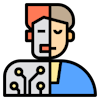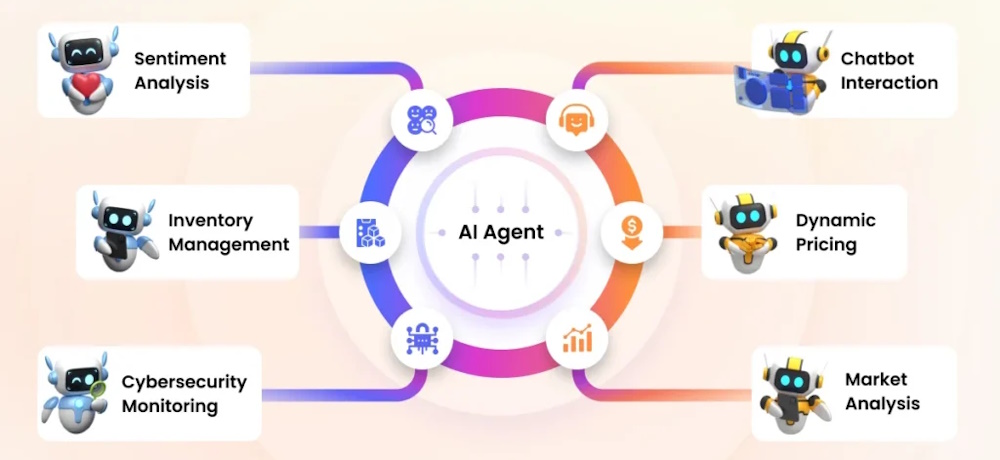 Computer-Using Agent (CUA)
Computer-Using Agent (CUA)
An AI system designed to interact with browsers like we do
I frequently use my smart phone's browser to order meals from restaurants, pay, and have them delivered to my door. Why can't I have an AI agent do it for me? Well, now you can!
The Computer-Using Agent (CUA) model is an advanced AI system designed to interact with graphical user interfaces (GUIs) like browsers in a manner similar to humans.
OpenAI has released Operator, a CUA model built on top of OpenAI's large language model GPT-4o and available as a research preview to US-based ChatGPT Pro subscribers. Later, OpenAI says it plans to bring Operator to Plus, Team, and Enterprise users, and to integrate the CUA capabilities into ChatGPT. OpenAI claims that Operator outperforms similar rival tools, including Anthropic's Computer Use, a version of Claude 3.5 Sonnet that can carry out simple tasks on a computer, and Google DeepMind's Mariner, a web-browsing agent built on top of Gemini 2.0.
The CUA model could revolutionize how we approach human-computer interaction and task automation

 How it Works
How it Works
The CUA model is an AI concept focused on how intelligent systems interact with computers to perform tasks
It is a framework for designing AI systems that work effectively with computing resources, interfaces, and environments to achieve specific goals. The CUA model emphasizes the interaction between an AI agent and the computer as a problem-solving tool.
The CUA model utilizes large language models as a foundation and incorporates computer vision to interpret screen contents. The model learns to associate visual elements with appropriate actions by interacting with buttons, menus, and text fields on computer screens. The agent is trained to navigate and use various software applications, and performs tasks by manipulating GUI elements, mimicking human computer use.
On the fly, the agent breaks tasks down into smaller steps and tries to work through them one by one, logging the thought processes and results, and backtracking when it gets stuck. Through screenshots and mouse and keyboard controls, Operator can navigate websites, fill out forms, order groceries, buy tickets, and more, all without API integrations. Instead of using the browser on your computer, Operator sends your instructions to a remote browser running on an OpenAI server, allowing parallel tasks.
The Operator CUA agent is context aware and sensitve to security needs. For example, it will require user approval for critical actions and will automatically transfer control to humans when handling sensitive information like passwords or payment details. The model has been trained to stop and ask the user for information before doing anything that may have external side effects, like making weapons.
 Key Components of the CUA Model
Key Components of the CUA Model
There are four key components to the CUA model
The Agent is the AI system or entity performing the task. It can be an intelligent agent that perceives its environment, makes decisions, and acts upon those decisions. Examples include virtual assistants, recommendation systems, and search algorithms.
The Computer is the platform or environment used by the agent to perform its tasks. It could involve hardware, software, operating systems, and networks. The computer provides computational power, interfaces, and storage for the agent.
The Task is the goal or problem that the agent aims to solve. Tasks could range from simple computations to complex decision-making processes, like data analysis or autonomous driving.
Interaction refers to the way the agent interacts with the computer to achieve its objectives. This involves algorithms, input/output mechanisms, and decision-making frameworks.
Characteristics of the CUA Model
- Autonomy: The agent operates independently to achieve its tasks, using the computer as a tool.
- Adaptability: The agent adapts its strategies based on the computer's capabilities, user input or changes in the environment.
- Optimization: For efficiency, the agent optimizes resource usage, such as processing power and memory.
- User-Centric Design: In some implementations, like Operator, the model considers user behavior and preferences in order to make the interaction intuitive and effective.
Applications of the CUA Model
- Virtual Assistants: AI-powered tools like Siri, Alexa, and Google Assistant embody the CUA model by interacting with computing systems to perform tasks for users.
- Search Engines: AI systems that process user queries and interact with large databases to retrieve relevant information.
- Data Analysis Tools: Intelligent agents use computing power to process and analyze large datasets, providing insights or recommendations.
- Autonomous Systems: Automation of complex software tasks like AI systems controlling robots, drones, or self-driving cars, which use onboard computers to perceive their environment and make decisions.
- Accessibility: AI agents have the potential for enhancing accessibility for users with disabilities.

 Challenges in the CUA Model
Challenges in the CUA Model
- Resource Constraints: Limited processing power or storage on the computer can hinder the agent's performance.
- Interface Limitations: Poorly designed user interfaces or APIs can reduce the agent's ability to interact effectively with the computer.
- Complexity of Tasks: As tasks become more complex, the interaction between the agent and computer requires advanced algorithms and optimization.
- Security and Privacy: Ensuring the integrity of the agent's operations and safeguarding sensitive data is critical.
 Future of the CUA Model
Future of the CUA Model
The CUA model is expected to evolve with advancements in AI and computing technologies. The evolution should enable greater integration with cloud and edge computing, more sophisticated interaction patterns through natural language processing and adaptive interfaces, and enhanced agent autonomy which reduces the need for human intervention.
Currently, OpenAI is collaborating with a number of businesses, including OpenTable, StubHub, Instacart, DoorDash, and Uber. Expect more collaborations in the future as well as competition from other CUA models such as Computer Use from Anthropic and Google's Mariner.
 Links
Links
Operator
youtube.com/watch OpenAI demonstrates Operator
openai.com/index/introducing-operator
help.openai.com/en/articles-operator
openai.com/index/computer-using-agent
theverge.com/2025/1/23/openai-chatgpt-operator-agent-control-computer
technologyreview.com/2025/01/23/openai-launches-operator-an-agent-that-can-use-a-computer-for-you
AI Agents
ibm.com/think/topics/ai-agents
salesforce.com/agentforce/what-are-ai-agents
newhorizons.com/resources/blog/what-is-an-ai-agent
news.microsoft.com/source/features/ai/ai-agents-what-they-are-and-how-theyll-change-the-way-we-work